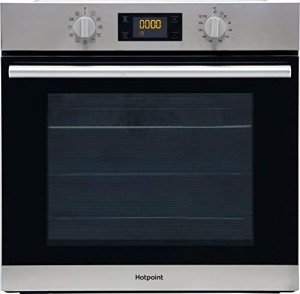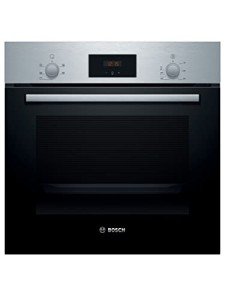
Best Single Electric Oven
Add a reviewOverview
-
Founded Date May 12, 1998
-
Sectors Informatic Technology
-
Posted Jobs 0
-
Viewed 21
Company Description
Five Killer Quora Answers On Single Fan Oven
Understanding the Single Fan Oven: A Comprehensive Guide
The cooking world has progressed substantially over the years, with devices ending up being more advanced and efficient. One such advancement is the single fan oven, a kitchen staple for numerous home cooks and professional chefs alike. This post digs into the complexities of single fan ovens, their benefits, and useful pointers for usage.

What is a Single Fan Oven?
A single fan oven; https://gitea.myrmidon.org,, also referred to as a stove, is designed to prepare food equally using a fan and an internal exhaust system. Unlike standard ovens that rely primarily on convected heat, single fan ovens distribute hot air around the food, making sure a constant temperature level throughout the cooking process. This feature boosts cooking efficiency and reduces cooking times compared to basic ovens.

How Does a Single Fan Oven Work?
The mechanics of a single fan oven are simple but ingenious. The oven consists of numerous key components:
- Heating Element: This generates the heat needed for cooking, generally located at the top and bottom of the oven.
- Fan: Positioned at the back of the oven, this part distributes the hot air around the food.
- Control Panel: It enables users to set the temperature level and cooking time.
- Thermostat: This gadget screens and keeps the preferred temperature during cooking.
When the oven is switched on, the heating elements warm up, and the fan starts to flow the heat evenly. This ensures that all sides of the food are exposed to hot air, leading to much better cooking outcomes– especially for baked items.
Benefits of Using a Single Fan Oven
Single fan ovens boast several benefits, making them popular amongst cooking lovers. The main advantages include:
1. Even Cooking
- The flowing air avoids cold and hot spots within the oven, enabling food to prepare uniformly. This is particularly helpful for baking pastries, cakes, and bread.
2. Lowered Cooking Time
- By distributing hot air, stove usually cook food quicker than standard ovens. This can lead to time cost savings in meal preparation.
3. Energy Efficiency
- Single fan ovens normally use less energy, as they can prepare food more quickly and may need lower temperatures.
4. Browning and Crisping
- The air flow in a single fan oven assists accomplish a preferable golden-brown finish on meals, particularly casseroles, roasted vegetables, and meats.
5. Flexibility
- These ovens can a range of cooking designs, from roasting and baking to broiling and reheating leftovers.
Comparing Single Fan Ovens with Traditional Ovens
To much better comprehend the distinct qualities of a single fan oven, it’s helpful to compare it to a conventional oven. The table listed below summarizes essential differences:
| Feature | Single Fan Oven | Traditional Oven |
|---|---|---|
| Cooking Method | Convection (distributing air) | Radiant heat |
| Cooking Time | Much shorter | Longer |
| Temperature level Consistency | More consistent | Can have hot/cold spots |
| Energy Consumption | Generally lower | Greater |
| Ideal for Baking | Much better browning and increasing | Great for roasting |
How to Use a Single Fan Oven
For optimum results with a single fan oven, consider these useful tips:
-
Adjust Temperature and Cooking Time:
- When using a single fan oven, lower the cooking temperature by about 20 ° F (10 ° C) compared to conventional recipes. As a guideline of thumb, check for doneness a bit earlier than mentioned.
-
Usage Shallow Baking Pans:
- Shallow pans allow better air flow, promoting even cooking and browning.
-
Avoid Crowding the Oven:
- Ensure adequate area in between meals for air flow.
-
Rotate Baking Sheets:
- For numerous trays or pans, rotate them midway through cooking to guarantee even heat distribution.
-
Keep the Oven Door Closed:
- Each time the door is opened, heat leaves; prevent unneeded openings during cooking.
FAQs About Single Fan Ovens
-
Can I use regular dishes in a single fan oven?
- Yes, but it’s suggested to adjust both the temperature level and cooking time for ideal results.
-
Are single fan ovens more costly than conventional ovens?
- They can vary in price, but while some models may be more pricey, their effectiveness can cause cost savings on energy bills.
-
Can I bake numerous items simultaneously?
- Yes, but spaced out appropriately for even air blood circulation. It’s recommended to turn trays midway through cooking.
-
Do single fan ovens come with extra functions?
- Numerous models include self-cleaning options, multiple cooking modes, and wise technology for enhanced convenience.
-
Is maintenance various for single fan ovens?
- Maintenance is similar however be conscious of the fan and ensure it’s kept clean for ideal efficiency.
The single fan oven stands out as an exceptional alternative for those wanting to improve their cooking skills and efficiency in the kitchen. Its ability to cook food equally and quicker can transform the cooking experience, making even the most complex recipes basic to perform. By understanding how to use a single fan oven successfully and leveraging its advantages, home cooks and expert chefs can enjoy a more enjoyable and productive cooking journey.


